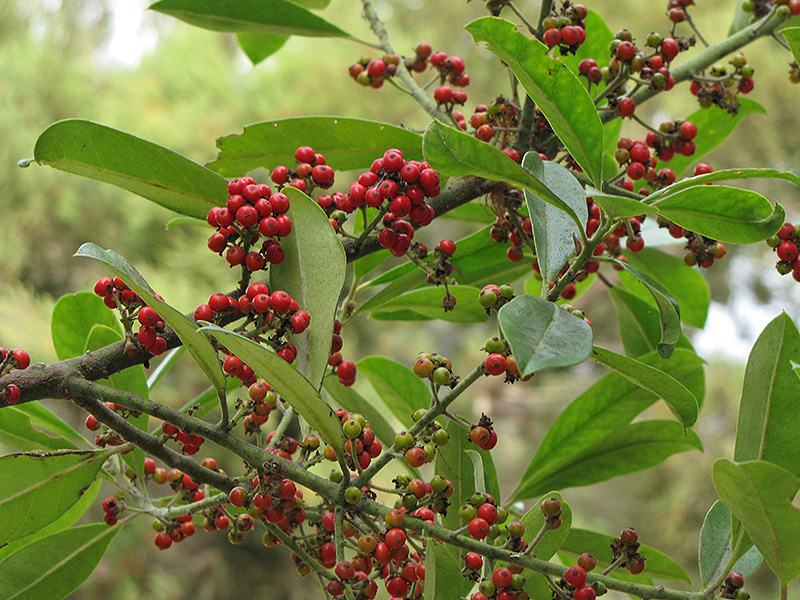>> Home
Height: 25 feet
Spread: 15 feet
Sunlight:
![]()
![]()
Hardiness Zone: 9
Other Names: Paraguay Tea, South American Holly
Description:
This variety starts out very shrubby but will eventually grow into quite a large tree in frost free climates; oval, serrated leathery leaves are used medicinally and for tea; beautiful red berries in fall and winter; excellent for screening
Ornamental Features
Yerba Mate is primarily valued in the landscape for its ornamental globe-shaped form. It has attractive green evergreen foliage. The serrated oval leaves are highly ornamental and remain green throughout the winter.
Landscape Attributes
Yerba Mate is a dense multi-stemmed evergreen tree with a more or less rounded form. Its relatively coarse texture can be used to stand it apart from other landscape plants with finer foliage.
This is a relatively low maintenance tree, and is best pruned in late winter once the threat of extreme cold has passed. It is a good choice for attracting birds and bees to your yard. It has no significant negative characteristics.
Yerba Mate is recommended for the following landscape applications;
- Mass Planting
- Hedges/Screening
- Windbreaks and Shelterbelts
Planting & Growing
Yerba Mate will grow to be about 25 feet tall at maturity, with a spread of 15 feet. It has a low canopy with a typical clearance of 2 feet from the ground, and is suitable for planting under power lines. It grows at a fast rate, and under ideal conditions can be expected to live for 50 years or more.
This tree does best in full sun to partial shade. It is quite adaptable, prefering to grow in average to wet conditions, and will even tolerate some standing water. It may require supplemental watering during periods of drought or extended heat. It is particular about its soil conditions, with a strong preference for rich, acidic soils. It is quite intolerant of urban pollution, therefore inner city or urban streetside plantings are best avoided, and will benefit from being planted in a relatively sheltered location. Consider applying a thick mulch around the root zone in winter to protect it in exposed locations or colder microclimates. This species is not originally from North America.
